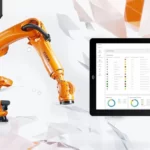ASIA ELECTRONICS INDUSTRYYOUR WINDOW TO SMART MANUFACTURING
NEC’s Autonomous Mobile Robot Technology Doubles Efficiency
NEC Corporation has developed a control technology that doubles the efficiency of autonomous mobile robots (AMR) in warehouses while maintaining a high level of safety.
The company plans to put this technology into practical use by March 2024. It aims to have it installed in NEC’s cooperative AMRs in Japan.

Technology Overview
In recent years, labor shortages and large warehouses accelerated the introduction of robots for transporting materials. However, even when robots have been introduced to automate transport work, it has been necessary to reduce traveling speed to ensure safety. Also, the improvement of transport efficiency has become a challenge.
Introducing robots into existing warehouse becomes difficult since it has been necessary to construct passageways and areas dedicated to mobile robots. This is done in order to accelerate speed while ensuring safety.
Risk-Sensitive Stochastic Control Technology
NEC has developed a risk-sensitive stochastic control technology that can control autonomous mobile robots and meet safety demands. The company utilized models that can express uncertain factors that vary from one site to another to accomplish this. These include sensor measurement errors and differences between simulation results and actual robot movements. The new technology has also adopted methods that have been used in actuarial finance.
As a result, robots can autonomously determine when to travel at high speed, and over the shortest distances. These include traveling in low risk locations without workers, objects on the floor or other obstacles. Conversely, robots will travel at a low speed when using routes that are determined to be high risk locations.
When comparing transport work between a robot applying this technology and a conventional robot, it was confirmed that the work time was halved and the transfer efficiency could be doubled while ensuring safety. In addition, safety and efficiency can be achieved without dedicated robot areas, making it easy to install in existing warehouses.
Going forward, NEC will continue to develop these technologies through on-site demonstration experiments, aiming for their early installation in autonomous mobile robots for a wide range of industries.




